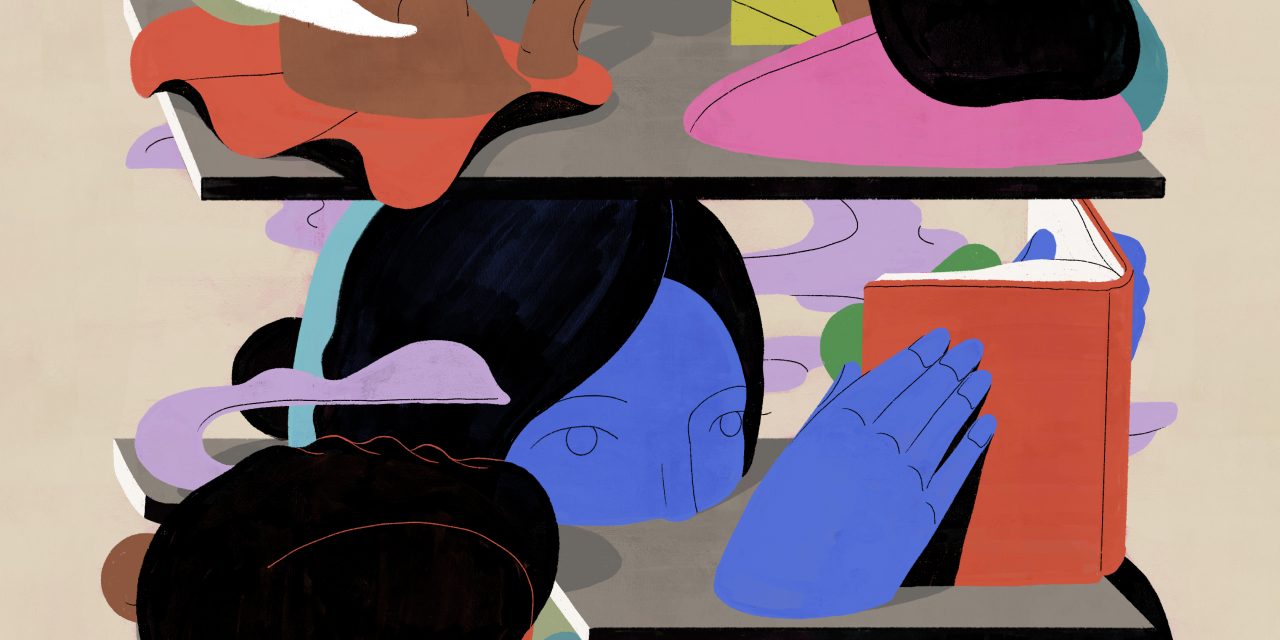
The Power of Storytelling

A collaborative humanities project helped Milton’s sixth-graders gain a deeper appreciation for the power of storytelling
Story by Sarah Abrams
On a morning last spring in classrooms throughout Ware Hall, Milton’s sixth-graders fielded questions from their classmates about historical figures they had spent the past several months researching and writing about.
Sitting in groups of four before their classmates, teachers, and families, the students took turns delivering their findings, asserting that the people they had chosen to study possessed strong democratic ideals—from politician and businessman Robert Smalls to scientist and astronaut Sally Ride to mathematician and computer scientist Annie Easley.
A bevy of questions from their classmates followed: “How did your person demonstrate democratic citizenship?” “How did events going on at the time affect their views?” “How were they perceived?” “What goals did they wish to accomplish?”
Later, students read narratives about events in their own lives, sharing stories of reflection and discovery, from deep connections to their pets to the isolation they felt during the pandemic to moments that revealed unexpected personal courage. All the essays were on display and available by scanning a QR code linked to their stories.
The morning event marked the culmination of a year-long collaboration between Rose Bailey’s social studies and Adam Machson-Carter’s English classes examining the power of storytelling—from both an analytical and a narrative perspective. Over the course of the year, the sixth-graders researched and wrote reports on the lives of U.S. historical figures and wrote and read their own personal narratives.
In the social studies portion of the project, the students chose a U.S. historical figure who illustrated the qualities of democratic citizenship described in Amanda Gorman’s iconic poem “The Hill We Climb.” After weeks of organizing and analyzing their research, each student wrote a three-to-five-page essay making the case for how the individual they had chosen illustrated those qualities.
“The goal from a social-studies-specific lens,” says Bailey, “is for students to understand what it’s like to be a researcher with expertise who is able to communicate that expertise to others. The panels the students took part in are modeled after a research form they might see later in their academic careers. It required them to think about and explain what democratic citizenship means and, when it was their turn to ask questions, to ask classmates about their research in order to draw connections. It’s about both the process and their figures.”
Isha Singh ’29 chose 19th-century writer and activist Matilda Joselyn Gage, whom she found on the Women’s History Museum website, as the historical figure she wanted to know more about. “I was wondering why I hadn’t heard of her before, and furthermore, why she wasn’t spoken about as much as [women’s rights activists] Susan B. Anthony and Elizabeth Cady Stanton,” Isha says.
In the English portion of the project, the sixth-graders engaged in a deep study of storytelling and the literary techniques writers employ. They started with Humans of New York, a book and collection of Instagram blog posts about people living in New York City, and personal narratives by children’s book writers, including The Proudest Blue: A Story of Hijab and Family, by Ibtihaj Muhammad.
“We looked at these stories together,” Machson-Carter says. “Here’s why an author is doing this. Here’s how an author is exploding a moment—a strategy to spread out a really important moment—and here’s how they use that moment to show the reader what they mean. Students then took those lessons to create their own narratives. They got to tell the story they wanted to tell, but they had a set of techniques that they needed to try to apply.”
Isha Singh’s personal narrative, “Riya and Friends,” described her close ties with her sister, Riya Singh ’22, and how their relationship helped her form closer connections with others. “I wanted to show how much family means to me, but because socializing and teamwork are such important aspects of the Milton community, I also wanted to connect it back to Milton,” Isha says. “Before we did this project I didn’t really consider how much impact stories had on people.”
Through the year-long process of researching, reading, and writing, Bailey and Machson-Carter believe the students came away with a number of important lessons. They not only learned storytelling skills, but also were asked to consider whose stories are told and by whom. “We read a novel by a Choctaw author about the Trail of Tears and talked about what it means to hear this story from the perspective of someone like Andrew Jackson and someone whose family was part of the Trail of Tears,” Machson-Carter says. “We asked them to think critically about how to make those two sides present themselves.”
“Through this process of writing research papers and personal narratives, they have really solid modeling skills they can take forward as they move through their grades here,” Bailey says. “What we’re always working on in the Middle School—and through this effort specifically—is empowering our students to reflect on who they are, know how to use their voices to express their thoughts, and think about how they can use their voices for change.”




